Self sufficiency and homesteading is not just about survival and scrimping along. Becoming self sufficient is nurturing a system of abundance and creating a standard of living which money can’t buy.
This is not to say homesteading is easy, but so much value is to be gained from the energy you put in. In self sufficiency cooking is an extension of the garden or farm.
Cooking self sufficient recipes which enhance your ingredients with no waste is the key. The homestead kitchen is a sorting office of organic resources but also one of culinary delight and genius.
A self sufficient homesteader will always be looking to eat seasonally, being creative and celebrating their, fresh ingredients. This will come through a combination of experience and skill, maximising what you have when you have it.
The most rewarding self sufficient recipes are ones with the ingredients you have produced solely your land. Below I have listed 15 of my favourite self sufficiency recipes which would be perfect for any family homestead feast.
Most of these have come from the peasant farmer villages of Crete and Cyprus I know so well. Some are traditional, kitchen garden, delights I regularly cook at my Homestead in the Chiltern Hills in the UK.
1. Nettle pies
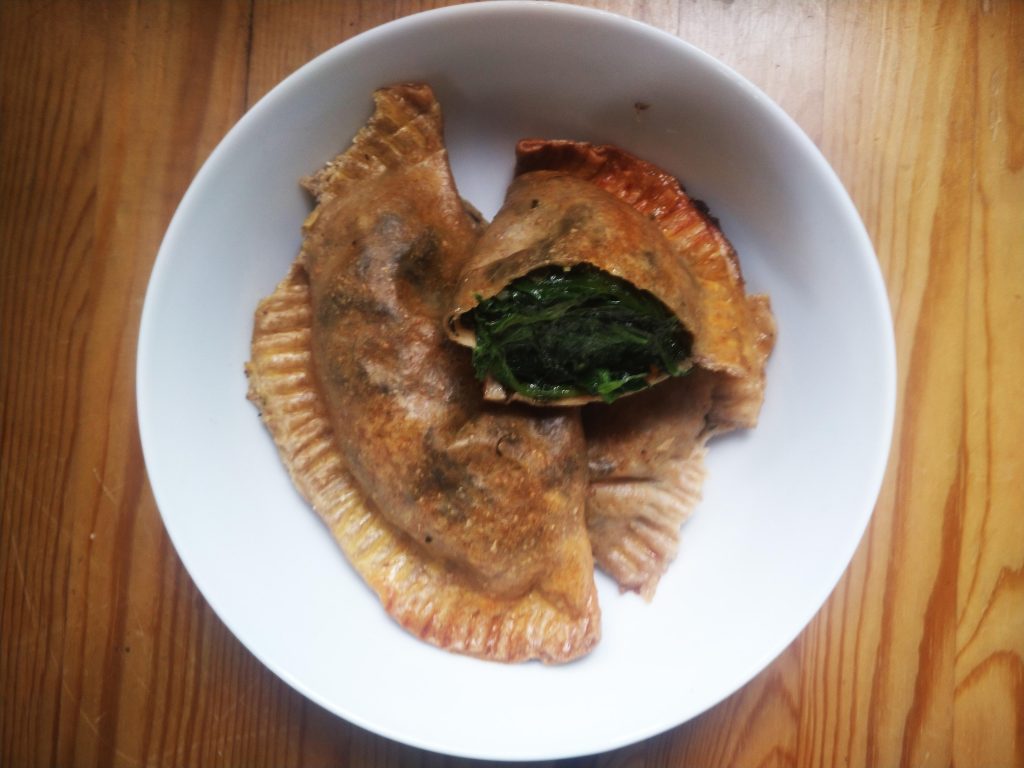
Nettles are known to most of us as the scourge of the plant world. With their acidic sting they can turn a summer woodland walk into an irritable misery. Nettles are less well known for their culinary excellence and extremely nutritious content.
This well known, wild plant is free bounty and makes for a particularly cost effective harvest. The self sufficient farmers of Crete were experts in the benefits of wild plants. Hence I invite you to make use of this ancient nettle pie recipe from the mountain valleys of Crete.
Ingredients for 20 pies
- 1kg of nettles
- 1 medium onion
- 5 spring onions
- 100ml of crushed walnuts
- 700ml of olive oil (for frying)
- Teaspoon of cumin
- Salt
- Pepper
For the pastry
- 220g of flour
- 1 tablespoon of vodka
- 2 x 4 tablespoons of olive oil
- 200ml of warm water
Wash your nettles well under running water and strain them thoroughly.
Finely chop the onion and fry in the pan with a little olive oil until golden.
Add the chopped spring onions and nettles to the pan and sauté them and add another 4 tablespoons of olive oil.
Add in the crushed walnuts, salt, pepper and cumin and stir well.
Pastry
Put your flour into a mixing bowl. In a measuring jug place the water and mix in the vodka, olive oil, and salt. Make a well in the middle of the flour and pour in the water. Using a fork whisk the centre to gradually mix in the flour. Keep mixing until the mix forms a firm dough and kneed for 10 minutes.
On a floured surface roll out a flat sheet of your dough until you have a large sheet. Using a 100mm diameter cutter cut a series of circles out of the dough.
Strain the nettle mix of any excess water and fill the circles with about a tablespoon of mix. Fold over one side of the circle to encase the mixture. Spread out the mixture evenly inside and make sure no mixture runs to the edges. Fork the edges of the pies to seal them and then turn them over.
Preheat the olive oil in a pan until hot. Add in the pies and fry until golden and then drain and serve.
2. Snails with rosemary
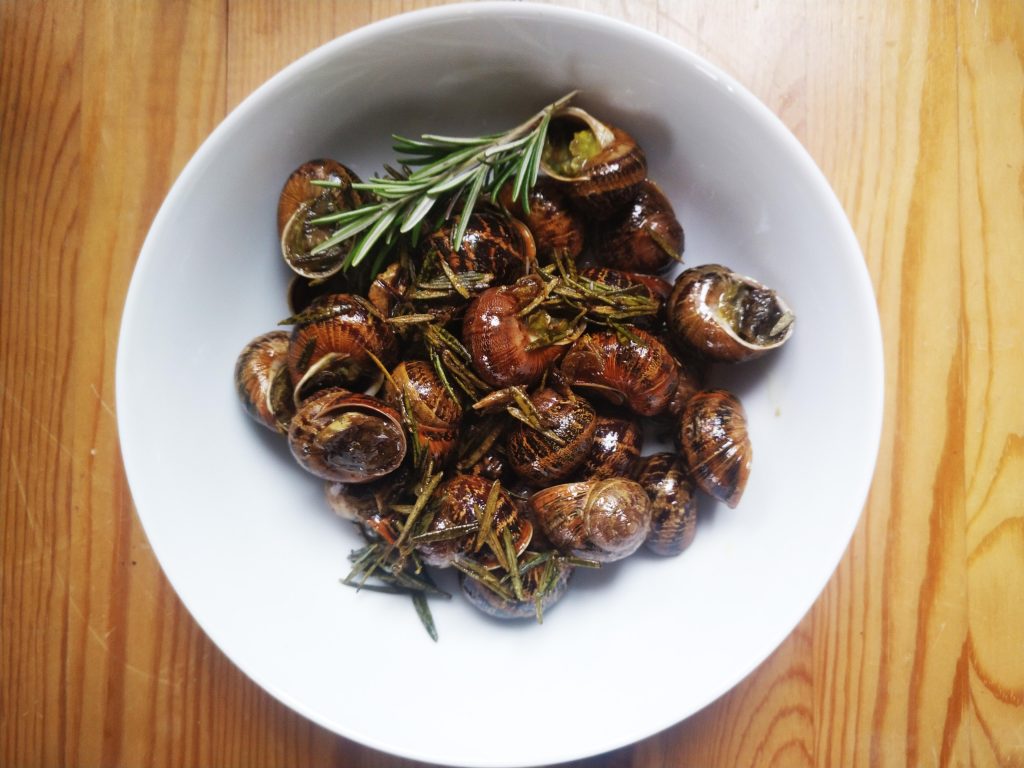
In life we can sometimes overlook some treasures which are sitting just under our noses. Pursued with hatred by gardeners, snails have always been an enemy of the vegetable plot. Most people are unaware that the large snails in our UK gardens were introduced for food by the Romans.
Indeed these common molluscs are actually delicacies in rural Crete. Self sufficiency is all about killing two birds with one stone. Yes sometimes pest control and a tasty lunch can go hand in hand! Why not collect some of your little friends and try this snail recipe from Crete?
Preparing snails
Capture your snails about three days before you need them. Feed them on fresh lettuce and cabbage to know what they have ingested. When ready to harvest clean away the membrane from the entrance to the shell. Run under the cold tap and clean away any dirt or grit from the shell and opening. Place in salt water for 5 minutes then put aside for later use or freeze them.
Ingredients
- 20 snails in their shells
- 100ml olive oil
- 2 tablespoons salt
- 4 tablespoons of red wine vinegar
- 2 tablespoons of Rosemary
Wash the snails thoroughly, drain and dry.
Warm a frying pan on a medium heat on the hob and evenly scatter the salt on the surface.
Place the snails face down in the pan evenly. After 6 minutes sprinkle over the rest of the salt and add the olive oil gently.
Without stirring to disturb the snails allow to fry for 6 minutes. After 6 minutes, stir the snails to coat them in hot oil. Add the vinegar, rosemary and allow snails to boil in their juices for 2-3 minutes. Serve warm.
3. Rabbit stew

Rabbits are a fast to reproduce and plentifully widespread across the countryside. Most of the time rabbits will venture onto your plot to forage your crops. Consequently I feel it is ethical enough to harvest rabbits for the table and enjoy nature’s surplus.
Rabbits are also a fast and effective method of homestead meat production. In my families self sufficient farm in Cyprus rabbits were always kept for the table. Rabbits can be raised on naturally occurring fodder and scraps from the kitchen.
Their manure is also good quality and does not burn crops if freshly applied. They are a very good quality, lean source of protein and produce good fur. If you do not hunt rabbits or keep them why not try this rabbit stew from Cyprus regardless.
Ingredients
- 2 rabbits diced into medium sized pieces
- 1.5 kg of sliced onions
- 2 crushed garlic cloves
- 2 sticks of finely chopped celery
- 2 medium carrots finely chopped
- 200 grams of chopped mushrooms
- 200ml of olive oil
- 1 large cinnamon stick
- 2 tablespoons of rosemary
- 2 tablespoons of thyme
- 4 bay leaves
- 400ml of red wine vinegar
- 400ml of red wine
- 5 whole pepper corns
- Salt
Wash and drain the rabbit and put to one side.
In a large pan, heat up the olive oil until hot and sauté the rabbit to seal it and then remove.
Sauté the onions until they start to go brown then add the garlic, carrots, celery and mushrooms.
Stir fry for around 7 minutes until the mix softens then place the rabbit pieces on top of the chopped vegetables. Add the rosemary, thyme, cinnamon, bay leaves, peppercorns, salt and mix together well.
Pour in the red wine and vinegar, stir again and then cover. Allow to come to a gentle boil and then simmer for 30minuites, or until the sauce thickens.
Serve.
4. Leek and potato soup
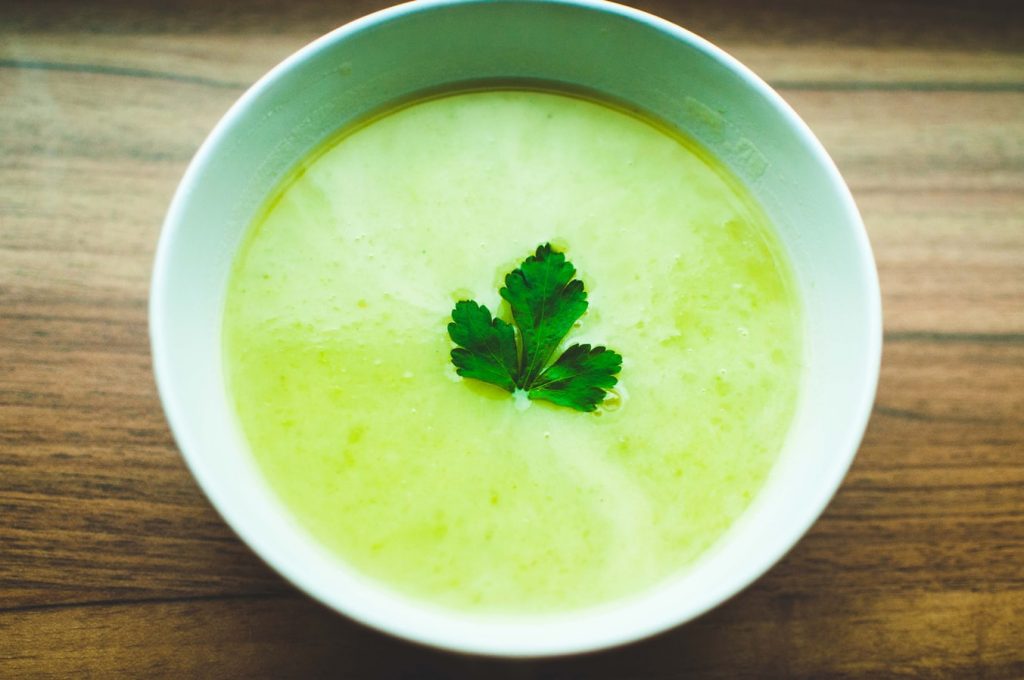
Self sufficient recipes always try to make the best out of what you have. This could not be more true in the late stages of winter where there is not much food around.
Most of the time there will always be two vegetables on hand. Homesteaders will always have a plot full of leaks for this time of the calendar. Furthermore the self sufficient farmer always has a healthy amount of stored potatoes!
Leek and potato soup is probably the first recipe I ever cooked with solely my own home grown produce. This is one of the best winter tummy, hugging, recipes you will grow to love and cherish.
Ingredients
- 1 kg of potatoes
- 1 Large onion
- 4 large leeks
- 200ml of olive oil
- 1.5 litres of vegetable stock
- 2 teaspoons of salt
- Half a teaspoon of ground pepper
- A handful of finely chopped parsley
- A teaspoon of dried thyme
- A teaspoon of oregano
Prepare the leeks by cutting off the base and tops, cut the leeks long ways down the middle, open the layers and wash. This is to get rid of any dirt or grit which have got inside during their growth.
Finely chop the leeks and the onion and add to a pan with the olive oil. Allow them to fry them down and soften while stirring to prevent burning.
Peel your potatoes and dice them into cubes no more than a cm thick. When leeks are soft add the potatoes, vegetable stock, thyme, oregano, salt, pepper and parsley.
Mix well and bring to the boil, then lower the heat, cover and allow to simmer for 25mins. When the potatoes are soft then it is ready. If you like your soup chunky leave it, if you like it smooth you can use a hand blender.
Serve.
5. Spinach cheese pies

Spinach has not always been a best seller especially with children. However this leafy green is packed with do many nutritious compounds it is a must have.
Spinach is delicious but most people do not know how to enhance its qualities. However this is something our friends from Crete have mastered and solidified in History. Spinach combined with creamy cheese, dill and encased in crispy filo pastry is a fine art.
This is a speciality which you simply have to try, also known as Spanakoita in Greece. Self sufficient homesteaders can usually source local cheese and flour. Spinach can be substituted with wild greens, Good king Henry, Perpetual spinaches and chards.
Ingredients
Phyllo:
- 180ml Olive oil
- 700g of flour
- 1 teaspoon of salt
- 300ml of whole milk
- 2 egg yolks
- 100 g of sesame seeds
Filling:
- 100ml of olive oil
- 2 eggs
- 1kg of spinach
- 1 bunch of finely chopped parsley
- 10 spring onions finely chopped
- 1 bunch of fresh dill
- 1 heaped tablespoons of dried mint
- 600g of soft feta cheese finely crumbled
- Salt
- Pepper
For the Phyllo dough mix the olive oil, milk, flour with a pinch of salt and work into the dough. Knead the mixture for around 7 minutes until consistent, mix adding flour if needed. Place in a bowl and cover with a towel to rest.
Add the olive oil to a pan and fry the spinach and spring onions until soft. Allow to cool and add the parsley, dill, mint, feta, eggs salt and pepper.
Mix the mixture thoroughly between your fingers until all ingredients are fully mixed. If your mixture is too wet use a cloth or fine sieve to drain slightly.
Roll your dough out to create multiple, thin, sheets to start forming your pies. Try to avoid the thin dough drying out.
Here you have two choices; you can make one large pie or individual pies. If you are doing large pies try to separate thick layers of the mixture with more phyllo.
This allows it to hold its shape better when you cut to serve. This is less work than individual pies. When formed in a baking tray, paint the top layer of dough with egg wash and sprinkle with sesame seeds.
When forming individual pies, cut long strips of rectangular dough. Place a tablespoon of mixture at one end and fold over to create triangular pies like samosas. Paint these with egg, sprinkle and sesame seeds and place on baking paper on a tray.
Bake your pies in the oven for 45 minutes at 180 degrees Celsius.
6. Roast pigeon with vegetables

One of my earliest memories of village life in Cyprus was watching a local flock of pigeons. In the cooling air of the late afternoon they would leave the dovecote and forage the surrounding hills.
I would watch them in amazement putting on aerial displays and perching around the farm. Hence I was curious one morning to see a lady climb up a ladder to the dovecote. Within seconds of opening the front there was an explosion pigeon feathers. Birds flew in all directions while the lady casually walked back down with a pigeon in her grasp.
I looked adjacent to my father who looked back at me, smirked and said……..‘lunch’. Many forget that modern agriculture is so different from traditional self sufficiency. Dovecotes used to also be common in Britain and young pigeon or Squab was a sustainable food source.
Pigeons can be housed in this way and will forage the landscape for food. This eliminates the need and expense of animal feeds providing you live in a healthy environment. Why not try this roast pigeon recipe from the village of Pommas in North West Cyprus.
Ingredients
- 4 whole pigeons
- 100ml of olive oil
- 3 large carrots cut into chunks
- 3 parsnips cut into chunks
- 3 generous leaves of kale shredded.
- 1 bunch of chopped parsley
- 200ml of red wine vinegar
- Salt
- Pepper
Place the carrots and parsnips into a roasting tray and lightly toss in salt and olive oil. Put into an oven at 220 degrees Celsius and leave mid shelf for 35 minutes.
Meanwhile take the pigeons out of the fridge and allow to rest. Season them well and rub in olive oil Heat up a pan with some olive oil until hot. You want to sear the base, sides, legs and wings but not the breasts. This is to half cook them before putting back in the oven. Then take them out of the pan after around 8 minutes.
The vegetables should be getting close to being cooked by now, Remove the vegetables from the oven. Mix them up with the kale parsley and then pour in the vinegar, Mix well. Now cover the roasting tray with foil and put in the base of the oven.
Turn your oven to its highest setting and place your pigeons on a roasting tray. Put them on the mid shelf, breast side up and roast in the oven for 12 minutes. Take the birds out to rest for 5 minutes before serving.
Take out the vegetables, stir with a wooden spoon and serve. This recipe is divine with a large glass of red wine!
7. Eggs scrambled with potato and spinach
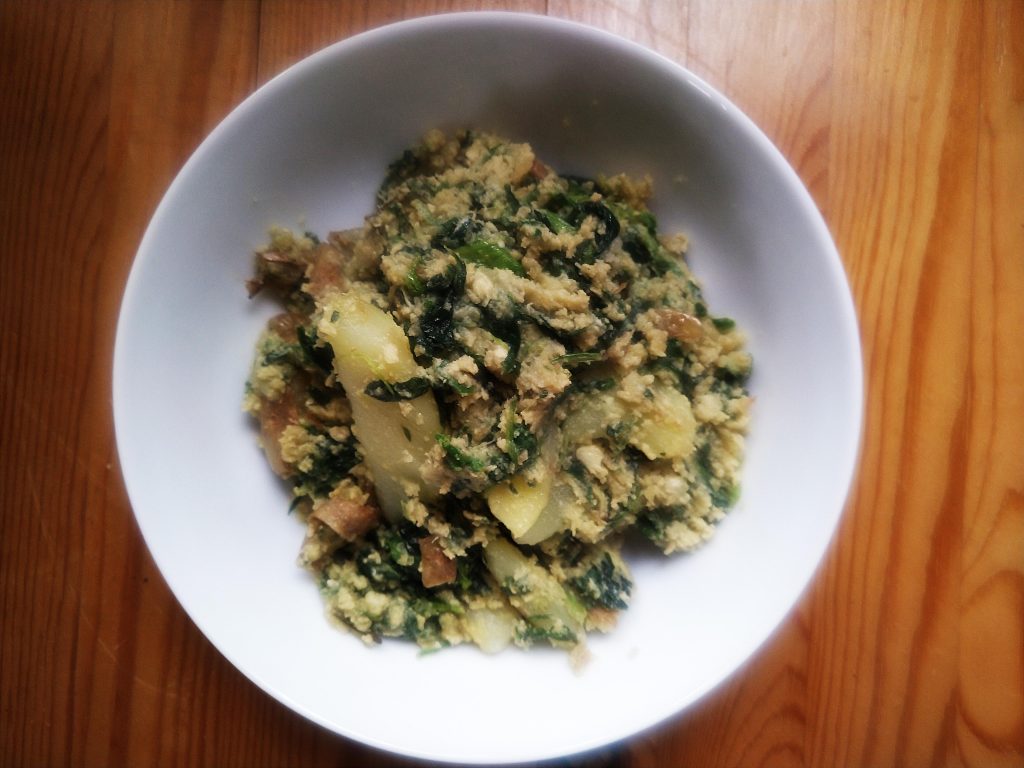
Most self sufficient homesteads typically produce three things; Potatoes, spinach greens and eggs. It was on the family homestead in Cyprus where I would commonly see these things.
Baskets of spinach, hessian sacks of potatoes and hands clutching eggs on the way back from the roost. This very simple dish was delicious and a real example of hearty peasant food. When striving for a self sufficient lifestyle sometimes the simplest things are best.
Ingredients
- Olive oil for frying
- 10 eggs
- 4 medium sized potatoes
- 4 bunches of spinach
- Salt
- Pepper
Whisk up the eggs thoroughly and season well with salt and pepper.
Wash the spinach well, drain off the excess water and finely chop.
Peel the potatoes and cut them into 1 cm cubes.
Heat the oil in the pan and fry the potatoes until going brown. Add the spinach and toss until wilted and cooked (about 5 mins).
Pour over the seasoned egg mixture and mix until well cooked and serve.
8. Broad beans with Artichokes

What I love about cultures that have practiced self sufficiency for centuries is the story behind their ingredients. Commonly what is thought of as basic, peasant farming is usually very sophisticated.
Even in the middle ages which we often call ‘the dark ages’ there is evidence of ingenious endeavours. Selectively breading animals to work as work machines and domesticating wild stock are just some examples. When reading recent books of self sufficiency and permaculture design I find so many familiar parallels with traditional farming practices.
The next dish is an example of crop rotation and companion cropping. In Cyprus the summers are hot and regularly have periods of drought. It is common therefore to have many drought tolerant species. Olive trees provide a sustainable source of energy rich olive oil.
Because the sun is strong the leaves of the olive tree are small and the canopy airy. Therefore lots of sunlight reaches the floor, artichokes are grown here as they thrive in the hot, dappled shade. Artichokes are very drought resistant so grow well under the olive trees.
However the well drained soil does not retain nutrients well and olives and artichokes need nutrients. Therefore every late winter the soil between the trees is tilled and broad beans are planted. The broad beans grow and fix nitrogen in the soil to feed the olives and the artichokes.
Consequently the broad beans also provide a leafy green and beans for the table. This dish celebrates all three of these wonderful ingredients, Olive oil, Broad beans and artichokes. All of which are attainable in most climates.
Ingredients
- 1kg of broad beans
- 5 artichokes, cleaned and cut in half
- 1 bunch of fresh coriander finely chopped
- 5 spring onions finely chopped
- 3 tablespoons of red wine vinegar
- 1 tablespoon of flour
- 3 garlic cloves chopped
- 100 ml of olive oil
- Salt
- Pepper
Boil up the broad beans in salted, boiling water for 15 minutes. Add the spring onions and artichokes and allow to simmer until soft.
Heat the oil in the frying pan and fry the garlic, when soft add the flour and stir well until lightly browned. Pour in the vinegar and stir so the mixture combines well.
Drain the vegetables and add to them to the frying pan mixture. Mix well, garnish with the fresh coriander and serve.
9. Vegetable curry

While travelling the west coast of India I accompanied a professor in the study of illegitimate human settlements. The study was focused within the inner slums of Mumbai. Here I discovered a magical labyrinth of settlements and a place where village farming met a modern city.
This was a real eye opener for me as I saw the same basic farming I remembered from rural Cyprus. Chickens and ducks would pace alleyways and goat herds would climb roofs to nibble fresh branches. This was a place where leopards stalked at night and after dark there was not a sole in sight.
I remember baskets of vegetables from the allotments being washed and prepared the evening meal. At night villagers would circle around a huge cauldron with a stick fire underneath.
Here a classic vegetable curry would be cooked every night and was a gathering of whatever was available. I feel that the vegetable curry is a celebrated dish where anything that needs using up can go in! Therefore I feel this is the perfect recipe for any self sufficient homestead.
Ingredients
- 100ml of olive oil
- 1 knob of butter
- 1 teaspoon of mustard seeds
- 2 finely chopped onions
- 4 cloves of garlic crushed
- 1 large root of ginger very finely chopped
- 1.5 litres of vegetable stock
- 1 tablespoon of finely chopped green chilly
- One head of broccoli chopped
- 2 large potatoes chopped
- 3 large carrots chopped
- A cup of fine, split red lentils
- 2 cans of chopped tomatoes (or fresh)
- 1 teaspoon of turmeric powder
- 1 teaspoon of coriander powder
- 1 teaspoon of cumin powder
- 1 teaspoon of chilly powder
- 1 teaspoon of Garam Masala
- A bunch of chopped coriander
- Salt
- Pepper
- Rice for serving
Heat the oil in a large saucepan on a medium heat and dissolve the butter. Add the mustard seeds and swirl around until they start to pop.
Add the onions and fry well until soft and brown, now add the garlic and ginger and fry for a couple of minutes more. Add all the powdered spices and stir into the mixture until absorbed. Pour in the fresh or chopped tomatoes and cook until heated through.
Pour in the stock and add the chillies, potatoes, broccoli, carrots and lentils and stir thoroughly.
Add salt and pepper and bring to a covered boil for 15 minutes and then allow simmer for 30 minutes. When complete check the potatoes are soft if not cook for a little longer. When complete add the fresh coriander and serve with rice.
10. Village chicken

Today we really take the humble chicken for granted. What we sometimes forget is those pale lumps of flesh in our supermarkets are the remains of a true pioneer. In the last 200 years humans have lived in a way they never have in their whole evolution.
When we ventured out of forest 10,000 years ago it was self sufficient farming that allowed us to domesticate animals. If you go to any homestead across the world you will always see one animal. The chicken! Chickens allow people to get a huge return in continuous protein supply for a very little investment.
When humans provide security from predators and a place to roam chickens reward us handsomely. These omnivorous birds are not fussy; they eat our pests and weeds and turn them into food!
Having basic knowledge of self sufficiency is to realise just how vital chickens have been for our success. Hence I have included a great chicken recipe from the farming villages of Cyprus.
Ingredients
- 1 whole chicken
- 100ml of olive oil
- 2 small potatoes
- 2 bay leaves
- 2 garlic cloves finely chopped
- 1 cinnamon stick
- Two large sliced tomatoes
- 2 carrots
- 4 celery stalks
- 8 spring onions
- 2 leeks
- Salt
- Pepper
Wash the chicken seasoning with olive oil, salt and pepper.
Cut all the vegetables into chucks and add to a large roasting basin. Drizzle with olive oil and add the salt, pepper, garlic, cinnamon stick and tomatoes.
Mix these together well and place the whole chicken on top. Roast in an oven until golden brown, this usually takes about (1hr 20 mins) at 200 degrees Celsius. Turn the bird half way through and mix up your vegetables.
11. Italian ragu bean stew

While spending time in a rural village in Tuscany I tried a dish that I would always come back to! It was a rustic tomato based ragu stew with wild boar sausage and vegetables.
I remember sitting by a large fireplace with roaring flames and a very large glass of local red wine. There are things in life that just work and this healthy, hearty dish is perfect for a winter’s day.
Ingredients
- 100m of olive oil
- I large onion finely chopped
- 3 cloves of crushed garlic
- 1 scotch bonnet chilly finely chopped
- 1.5 litres of vegetable stock
- 100 grams of game sausage or chorizo finely chopped or minced
- 2 large carrots finely chopped
- 4 sticks of celery finely chopped
- 2 small beetroot finely chopped
- 3 cans of chopped tomatoes (or 6 large tomatoes finely chopped)
- Half a tube of tomato puree
- 1 tablespoon of dried rosemary
- 1 teaspoon of fresh thyme
- A large bunch of parsley finely chopped
- 4 cans of Butter beans or Cannelloni beans
- Salt
- Pepper
Fry the onions in a large pan in the olive oil until golden brown.
Add the ground sausage and fry it until it starts to release its fats into the pan, now add the garlic and stir for 2 minutes.
Add the carrots, celery and beetroots and stir fry until soft. Now add the tomatoes and chilli and stir well until its starts to bubble.
Pour in the vegetable stock and stir in the beans, tomato puree, rosemary, thyme, parsley salt and pepper to taste.
Bring to the boil and allow simmering for 30 minutes and then serve.
12. Savoury pumpkin pies
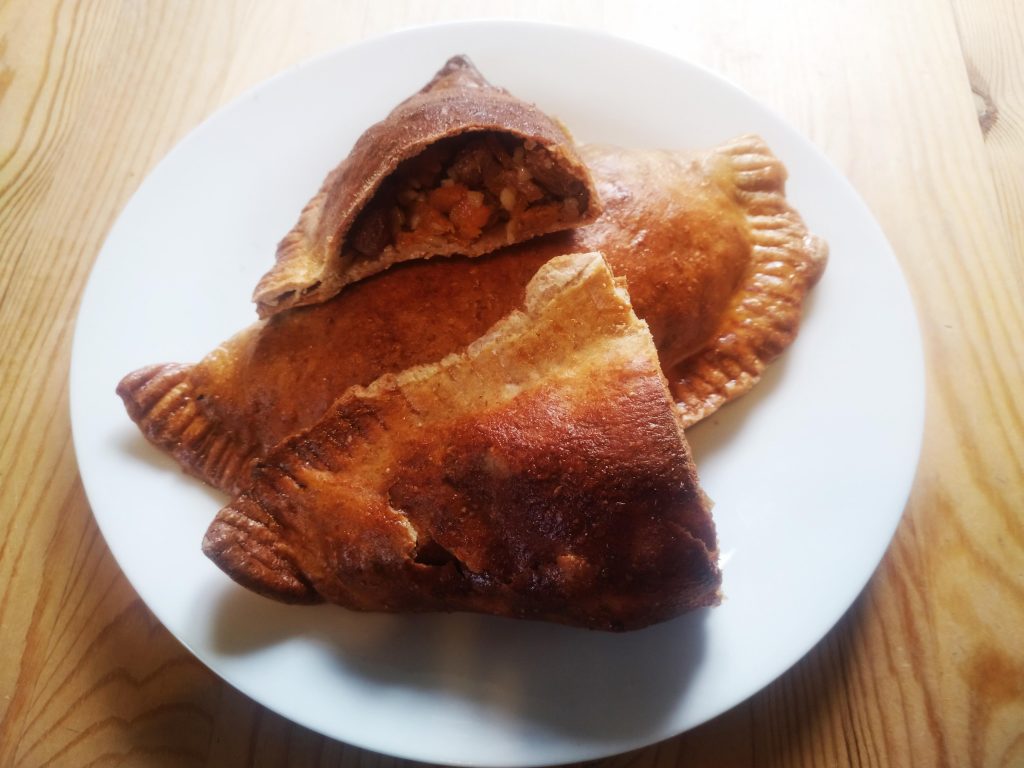
If there is one extremely valued crop on a homestead it is the winter squash, in this case pumpkins. Not only is the flesh nutritious and savoury these large vegetables store extremely well and for long periods. Every self sufficient family farm needs big, hearty meals but it also needs light hearted snacks as well. This is another traditional village Greek recipe which is both savoury and sweet. These lush pies are best served with fresh gossip, a strong coffee, and loads of friends!
Ingredients
- 1.5kg plain flour
- 180ml of vegetable oil
- 1 tablespoon of salt
- 1 tablespoon of pepper
- A teaspoon of cinnamon
- Water
Stuffing
- 2.5g of cubed pumpkin (or butternut squash)
- 1 cup of bulgur wheat
- 200 grams of raisins
- 70ml of olive oil
Make sure your pumpkin is finely cubed for this recipe, no more than half a centimetre wide. Place the pumpkin in a bowl in the fridge overnight sealed with clingfilm or foil.
Sprinkle your pumpkin with salt and leave to one side for a couple of hours. Then wash the pumpkin and drain well in a strainer. Now mix the pumpkin with the rest of the stuffing ingredients so they are evenly distributed.
For the pastry mix the flour and salt together in a large bowl and make a well in the centre. Add the vegetable oil and kneed in until it is completely absorbed. Make another well in the centre and now add water gradually and mix robustly into a firm dough.
Allow the dough to rest for at least 30 minutes and then divide into many golf ball, sized spheres. Roll these out into 200mm diameter (8inch) discs. Now spoon a large tablespoon of the mixture into the centre and fold in half. The pies will now be semi circles, using the prongs of a fork seal both sides of the pies together tightly. Try not to get any mixture around the edges as this will hinder the seal, this takes practice!
Grease an oven tray or line a tray with grease proof paper and lay your pies out. Make sure there is some space around them and you can egg wash if you wish. Bake in an oven at 180 degrees for 35 minutes until golden brown.
13. Rhubarb Crumble
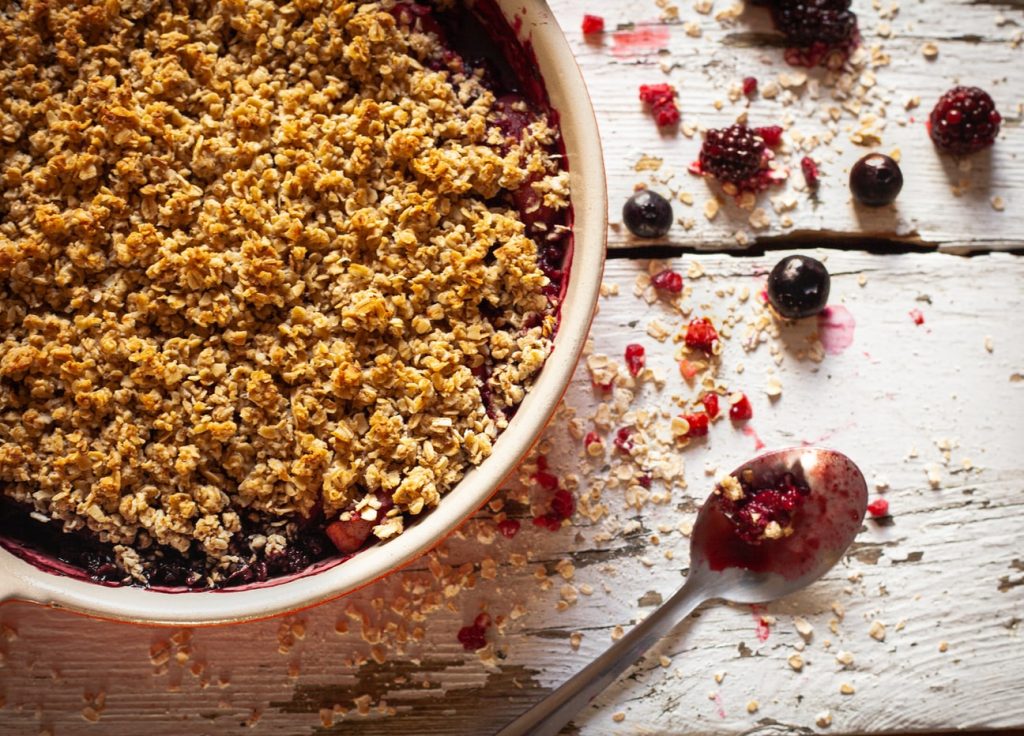
For self sufficient homesteaders food which brings the greatest reward for the smallest input is a very welcome thing. Rhubarb is a classic crop which can simply be planted and forgotten about.
I have even managed to get substantial yields under the dappled shade of apple trees. Hence there is absolutely no reason we should not include a classic joy of spring. Rhubarb crumble is easy to make fast and tastes absolutely divine.
Ingredients
- 1kg of chopped rhubarb in 2 cm pieces
- 200g of caster sugar
- 400g of plain flour
- 200g of cubed butter
- 250g Demerara sugar
Preheat the oven to 180 degrees
Place the Rhubarb in a roasting dish and sprinkle over 100ml of water and the caster sugar.
In a bowl, mix the butter, Demerara sugar and flour to make a crumble mixture with your fingers.
Now spread the crumble mixture over the rhubarb and cook in the oven for 40 minutes until golden.
Serve with custard or double cream.
14. Apple preserve

Everyone who is trying to become self sufficient will have to deal with seasonal gluts of produce. This is a phenomenon which is quite difficult to avoid due to seasonal harvests.
Apples are a staple fruit loved by homesteaders but more often you have more than you can use. This apple preserve recipe is another traditional recipe from Cyprus. Not only does this make an ordinary apple into a beautifully rich desert it will last for many months.
Ingredients
- 1.5kg of apples
- 1.5kg of sugar
- 600ml of water
- Juice of 3 lemons
Peel the apples and carefully with a knife remove the seeds and core. Place them into a bowel of water and lemon juice.
Then take the apples out of the lemon juice mixture and place them into boiling water. Leave them boiling for 2 minutes until they are soft. Now take out the apples and put them back inside the water with lemon juice. After 1 hour take out the apples, wash them and gently drain them.
Now prepare syrup by mixing the water with the sugar on a slight heat. Add the apples to the syrup and simmer for 6 minutes and then allow them to cool. The following day allow the apples to simmer further.
When cool, place the apples into glass jars with some syrup. These can then be stored in a cool place and served chilled.
15. Roasted figs with honey and walnuts

Sometimes it is easy to think that attempting to be self sufficient will lead to boring food. However that is certainly not the case as the next desert recipe shows. Even if you live in a more northern climate with good design you can still produce exotic wonders.
Walnuts are hardy trees and if given a fertile, sheltered and sunny site will produce well. This is the same with figs, originally from the Middle East can take surprisingly cold temperatures. The best way to fruit figs in such climates is by training them across a wall in full sun.
Obviously producing your own honey is the jewel in the crown for any homesteader. However if you do not already have bees I’m sure you can trade some of your own larder for some! This recipe is also magnificent with some homemade yogurt! If you have your own cows or goats this is another great recipe for self sufficiency.
Ingredients
- 10 figs
- 2 tablespoons of honey
- The juice of 1 lemon
- 40g of walnut pieces
Preheat the oven to 180 degrees Celsius.
Cut the figs down the middle and place cut side up in a roasting dish.
Squeeze the lemon juice evenly over the figs.
Scatter the walnut pieces evenly over the figs.
Drizzle the honey evenly over the figs.
Place in the oven for 15 minutes
Now serve with Greek yogurt, cream or ice cream.
Delicious.
Thank you for reading my article on 15 recipes for self sufficiency, are you going to try any of the recipes? Have you got any classic self sufficiency recipes of your own you would like to share? Did you try any out? How did it go?
Back to home
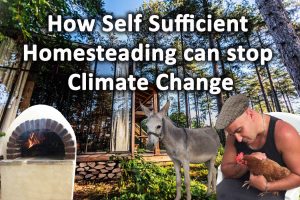
How Self Sufficiency and Homesteading can stop Climate Change
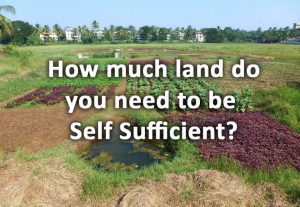
How much land do you need to be self sufficient?
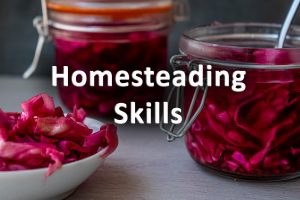
Homesteading skills, for Self Sufficiency

Homesteading Checklist for self sufficiency

A beginner’s guide to self sufficiency & its benefits

15 recipes for self sufficiency

How many chickens do you need to be self sufficient?

27 foods you can forage for free near your home
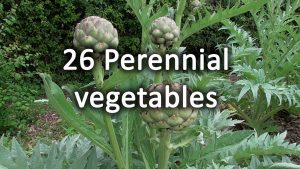
26 Perennial vegetables for the garden

Self sufficient homes

31 Homesteading projects

15 Ways to Store Food without Electricity

The best Climate for self sufficiency
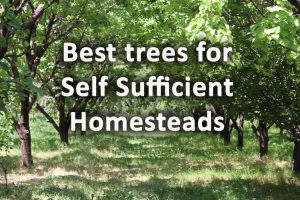
The most useful 22 Trees for a self sufficiency & homesteading
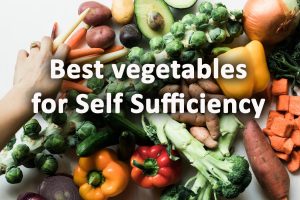
31 Vegetables for self sufficiency

What animals do you need to be self sufficient?

How to stop Climate Change with Crops – Crops for climate change

Temperate Food forests

32 Homesteading products for self sufficiency

10 Ways to Sustainably Heat Your Home

10 Ways self sufficient homesteading can be good for your health
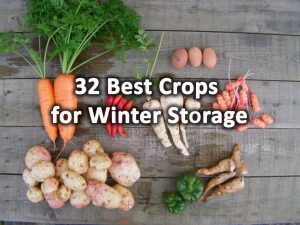
32 Best Crops for Winter Storage
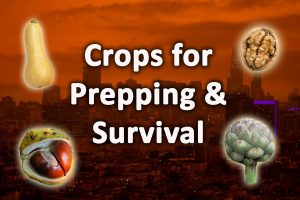
34 crops for prepping and survival
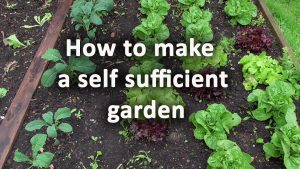
How to make a self sufficient garden

Homesteading verses farming what’s the difference?

Self sufficient greenhouse gardening

12 Crops which add nitrogen to the soil

32 of the best crops for Polytunnels

12 Best Crops for Carbon Sequestration

